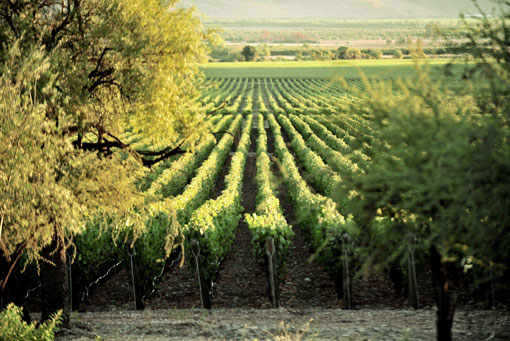Wine connoisseurs have long admired the Bordeaux, Carmenere and Syrah varietals of Chile’s Central Valley. Only recently, though, have the vineyards themselves become popular destinations for tourists seeking the wine-tasting experience of California’s Napa Valley or Argentina’s Mendoza province.
Chile’s Colchagua Valley, at the southern end of the Rapel Valley and about 100 miles (161 km) south of Santiago, was designated in 2011 as one of Wine Enthusiast magazine’s “10 Best Wine Travel Destinations.” Nestled between the Andes Mountains and the Pacific Ocean, the combination of mountain winds and marine breezes makes the valley perfect for growing red varietals. Its proximity to both also makes it a good stopover for travelers.
Visitors to Colchagua wineries can choose between independently arranged trips to individual vineyards and tours departing from nearby Santa Cruz. One vineyard that should not be missed is Viñedos Emiliana Orgánico. It started in 1986 as a traditional winery, but in 1998 shifted to organic and biodynamic viticulture. It cultivates grapes in five valleys across Chile, but one of its best-known wines, Coyam, is produced at the Bodega Los Robles in Colchagua. Visitors to Los Robles can take a walking tour, see the winemaking process and taste two reserve wines.
Oenophiles can get a more hands-on experience at Viña MontGras, where, in addition to a tour and tasting, they can pick grapes to create their own blend of three varieties. They then leave it at the winery to age in oak barrels and, after three to six months, receive a shipment of the bottled results at their home.
Claudia Cañete, director of tourism at MontGras, says the winery began offering the activity in 2003 to distinguish itself from others in the area. “People already knew a lot about wines,” she says. What they wanted now was “to live part of the experience of being a winemaker.” The program has already proven immensely popular. In 2006, 760 people took part; by 2011, annual participants had grown to 4,000.






